Abstract
Considering the trends and characteristics of leafy vegetable agriculture in Japan, data on yields, planted areas, and shipping volumes are important. Based on 2022 data, the leafy vegetable yield is the highest nationwide at 7.68kt, with the planted area being the highest at 419ha. The largest shipping volume was in Aichi Prefecture, with 3.04kt. As these figures show, leafy vegetable production in Japan is relatively small compared to the national average, and production volumes vary by region. Since Aichi Prefecture is the top in terms of shipping volume, the region may play an important role in leafy vegetable production. In addition, since the cultivated area is relatively small, efficient cultivation techniques and production management will be required. As demand for leafy vegetables increases, producers must strive to improve quality and yield, and develop cultivation plans that are tailored to the characteristics and demand of each region. It is hoped that further data collection and analysis will promote sustainable leafy vegetable production.
Butterbur harvest yield (main data).
Data from 2002 to 2022 on the yield of butterbur, a leafy vegetable crop in Japanese agriculture, reveals some interesting trends. The peak harvest volume nationwide was recorded in 2002 at 18.9kt, but has since declined gradually, falling to 40.6% of the peak in 2022. Considering this trend, there may have been some changes in the demand for butterbur or cultivation conditions. Possible factors include changes in demand, competition with other vegetables, and the effects of climate change. Improvements in technology and cultivation methods may also be a factor, making production more efficient. Given that the national production rate has decreased by 40.6% from the peak, it is difficult to say that butterbur production has been relatively stable. In the future, it will be important for producers to adopt sustainable cultivation methods while responding flexibly to changes in demand trends and market needs. In addition, it is necessary to consider strategies tailored to the characteristics and demand of each region.
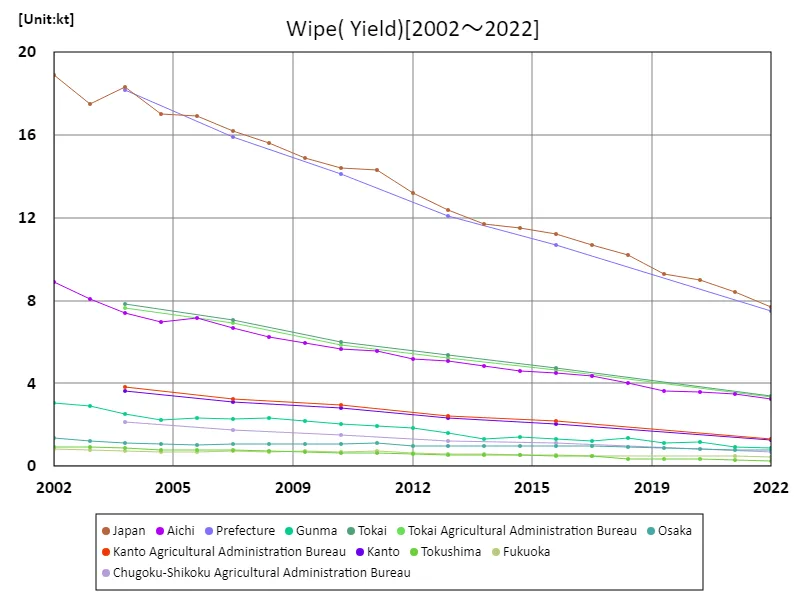

The maximum is 18.9kt[2002] of Japan, and the current value is about 40.6%
Butterbur harvest volume (by prefecture).
According to the latest data from 2022 regarding the yield of leafy vegetables in Japanese agriculture, Aichi Prefecture had the highest yield overall at 3.23kt. This is the highest value even including past data, suggesting that Aichi Prefecture plays a major role in leafy vegetable production. This trend may reflect Aichi Prefecture’s favorable local climate and soil conditions, as well as the development of agricultural techniques that have made efficient production possible. It is also possible that Aichi Prefecture is maximizing production by formulating appropriate cultivation plans in line with demand for leafy vegetables and market trends. On the other hand, production volumes in other regions are lower than Aichi Prefecture, suggesting that there are differences in regional characteristics and demand. This means that different regions adopt different strategies for growing leafy vegetables depending on different climates, land conditions and consumer preferences. In the future, it will be important to develop sustainable cultivation methods that take advantage of the characteristics of each region and to adjust production to meet demand. In addition, it is expected that further development of agricultural technology and information sharing will enable each region to produce more effectively.
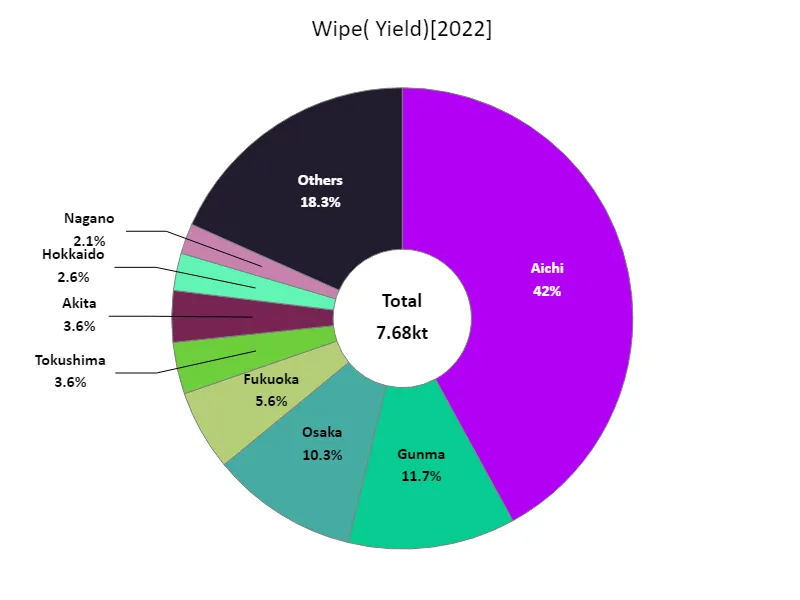

The maximum is 3.23kt of Aichi, the average is 175t, and the total is 7.68kt
Butterbur cultivated area (main data).
Looking at data from 2002 to 2022 on the area planted to butterbur, a leafy vegetable in Japanese agriculture, some interesting trends become apparent. The total cultivated area nationwide peaked at 867 hectares in 2004, and has since gradually declined, currently standing at 48.3% of its peak. Considering this trend, there may have been some changes in the demand for butterbur or cultivation conditions. Possible factors include changes in demand, competition with other vegetables, and the effects of climate change. Changes in grower cultivation choices and changes in agricultural land use may also be playing a role. Given that the national decline rate from the peak is 48.3%, it is difficult to say that butterbur cultivation has been relatively stable. Given changing demand and market trends, producers need to be flexible and adopt efficient and sustainable cultivation methods. It is also necessary to review cultivation plans to suit the characteristics and demand of each region.
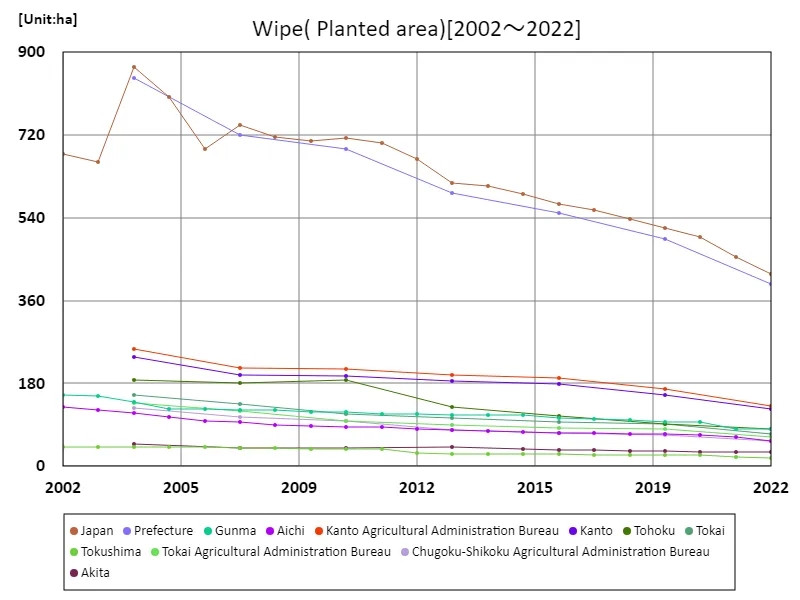

The maximum is 867ha[2004] of Japan, and the current value is about 48.3%
Butterbur cultivated area (by prefecture).
According to the latest data from 2022 regarding the area planted with leafy vegetables in Japanese agriculture, Gunma Prefecture has the largest area planted with 82 hectares. This is the highest value even including past data, suggesting that Gunma Prefecture is a major region for the cultivation of leafy vegetables. This trend may reflect the fact that Gunma Prefecture has suitable climate and soil conditions, as well as the development of agricultural techniques that enable efficient cultivation. It is also possible that strategic cultivation plans tailored to regional characteristics and demand are being implemented effectively. On the other hand, the cultivated area in other regions is lower than that of Gunma Prefecture, suggesting that there are differences in the center of production between regions. This is due to regional climate and land conditions, as well as grower choice, and each region may adopt different strategies. Going forward, each region will need to adopt sustainable cultivation methods to maximise production while adequately responding to demand. Further development of agricultural technologies, information sharing and strengthened regional collaboration will be key to making leafy vegetable production more efficient and sustainable.
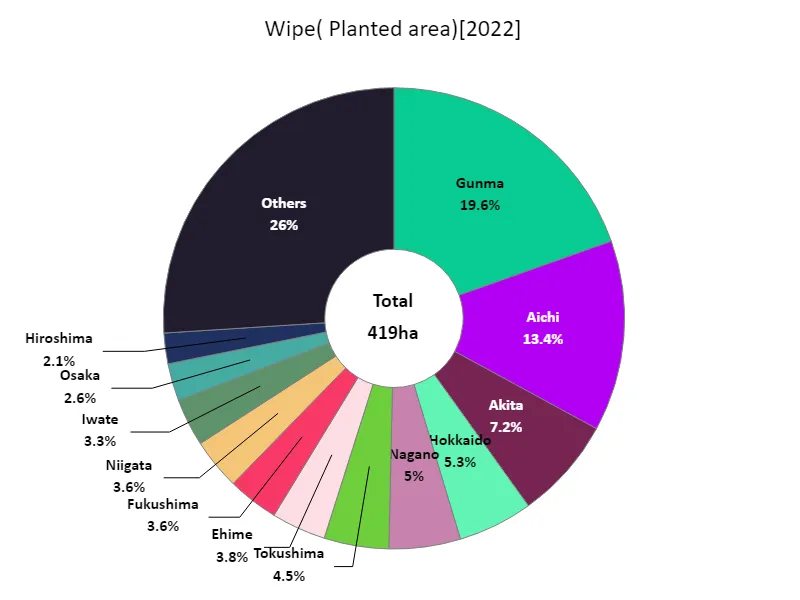

The maximum is 82ha of Gunma, the average is 9.52ha, and the total is 419ha
Butterbur shipment volume.
Looking at the latest data for 2022 regarding the shipping volume of butterbur, a leafy vegetable in Japanese agriculture, Aichi Prefecture shipped the most overall, at 3.04kt. The overall average was 150t, bringing total shipments to 6.6kt. A clear feature from this data is that Aichi Prefecture plays a very important role in butterbur production. Aichi Prefecture is known as a major producer of butterbur, and its largest overall shipping volume demonstrates the superiority of the region’s agricultural techniques and cultivation environment. In addition, the overall average shipping volume is 150 tons, which indicates that butterbur production is carried out on a certain scale. This suggests that producers are shipping a certain amount to meet demand. However, the fact that the volume of butterbur shipped is about half of the overall average shows that there are differences in shipping volumes between regions. This is due to differences in cultivation conditions and demand from region to region, suggesting the importance of production plans and distribution strategies tailored to regional characteristics. Overall, it appears that while the volume of butterbur shipped is influenced by regional characteristics and demand, it remains stable at a certain level, mainly in Aichi Prefecture. Going forward, sustainable production and flexibility to meet changing demand will be key for leafy vegetable production.
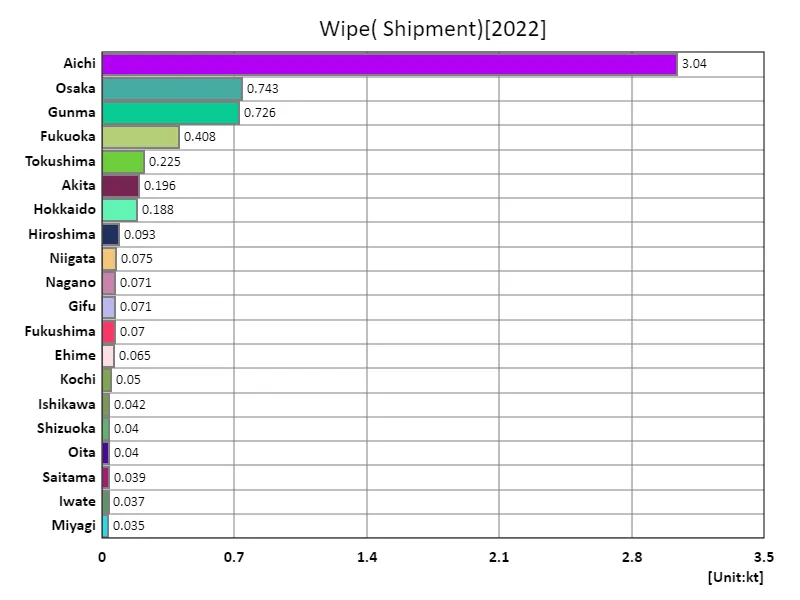

The maximum is 3.04kt of Aichi, the average is 150t, and the total is 6.6kt
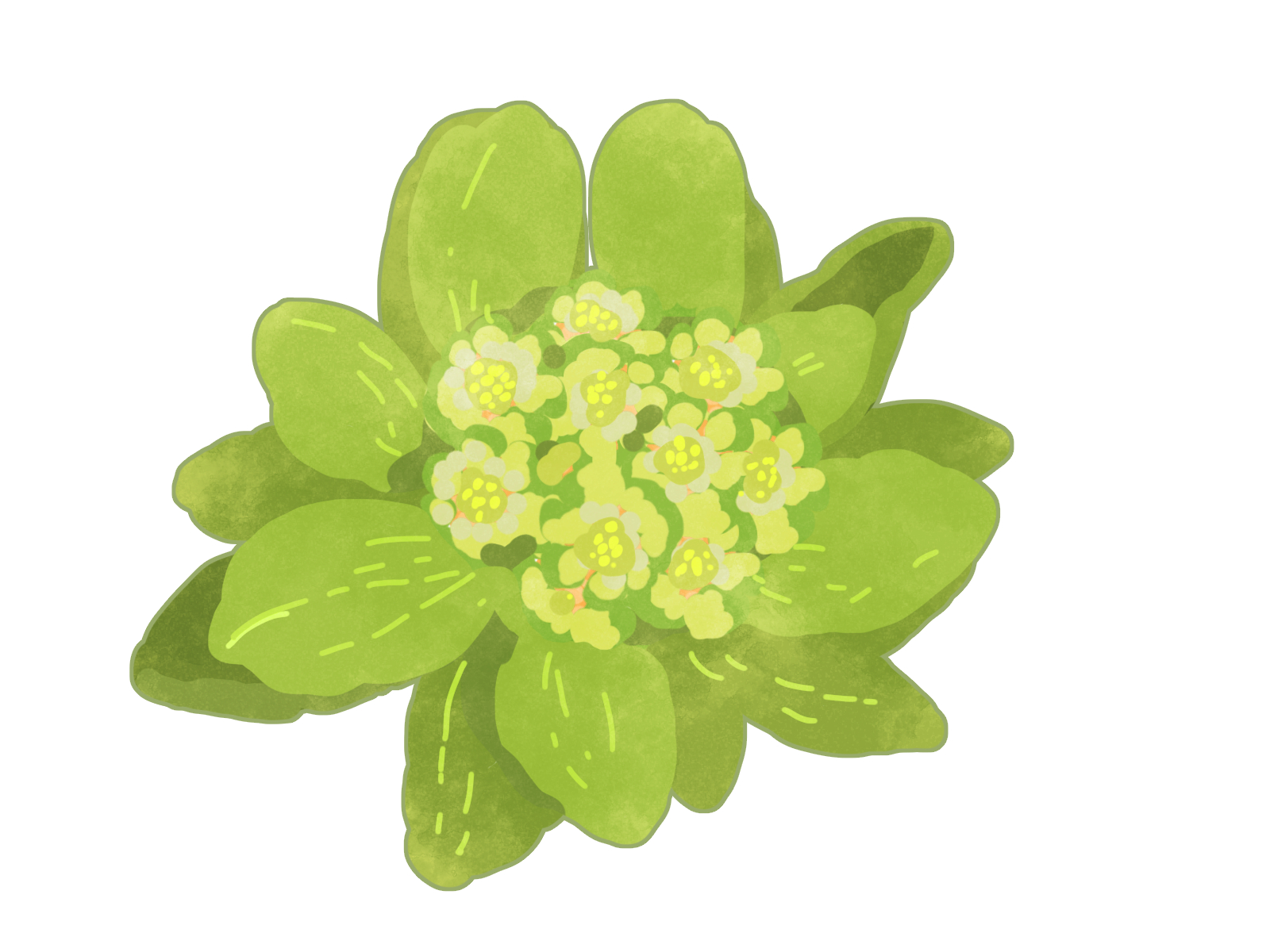


Comments